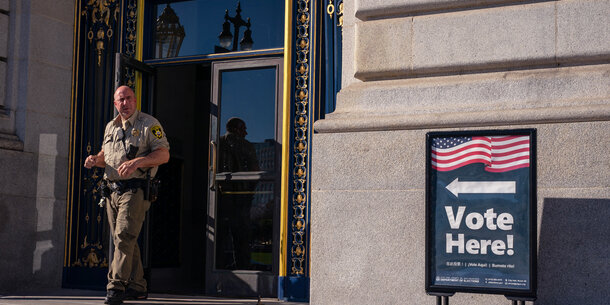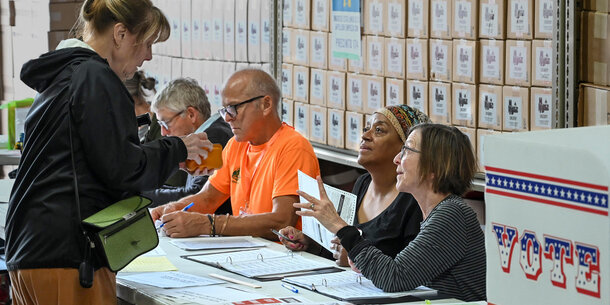This piece originally appeared in the Daily News
Wednesday in Brooklyn, the state Senate will hold the first in a series of hearings about the experiences and challenges faced by New York voters. No doubt the witnesses will testify to the notorious dysfunction at the city’s Board of Elections, which has disenfranchised thousands of New Yorkers and demoralized many more. For years, city and state leaders have channeled the public’s deep frustration with the agency, initiating investigations, lawsuits and partial reforms.
Yet the pattern of fiascos continues. Last month, the agency failed to exclude approximately 135,000 test ballots before announcing an early vote count for the mayoral primary. It’s time to stop this problem where it starts: the board’s very structure, which makes it resistant to public accountability, even for its most serious failures.
Some suggest that bold structural change can’t happen without altering the state Constitution, a process that requires passage by two consecutive legislatures and a ballot referendum. But state legislators have other options. As a forthcoming Brennan Center report will detail, the Legislature can make important changes to the Board to create public accountability, improve leadership, and mandate best practices in election administration. A constitutional change may still be in order, but these more immediate reforms would go a long way toward curing what ails this agency.
First, the Assembly and Senate should reduce the number of commissioners from 10 to four. The board’s leadership composition is larger and more diffuse than that of any other major multimember metropolitan elections agency in the country, which typically have three to six people in comparable roles. The number 10 comes from having two commissioners, one from each major party, from each of the city’s five counties.
None of the nation’s 15 largest elections jurisdictions with multimember boards outside of New York use geographic subdivisions to select members, and New York City doesn’t need to, either. Having 10 commissioners encourages inefficiency, obscures accountability in a system dominated by party insiders, and masks excessive party influence in operations meant to serve all New Yorkers. Decreasing the number of commissioners would promote more equitable voter service citywide.
In addition to reducing the number of commissioners, the Legislature should strengthen the process for selecting them. Many assume that the Constitution gives county party insiders control over the selection of commissioners, but the selection process is primarily dictated by state statute. In fact, the Constitution provides only that election “boards and officers” be selected on the nomination of “such representatives of [the two major] parties respectively, as the Legislature may direct.” Indeed, the City Council today has the final say over commissioner appointments. But they typically rubber-stamp nominees by county party leaders, perpetuating cronyism.
The City Council’s selection process should be merit-based and transparent. The Constitution doesn’t prevent requiring commissioners to have experience in election administration or voting rights, imposing term limits, or conducting the selection process in public — all elements state lawmakers can and should establish.
Along with applying more robust standards for choosing commissioners, Albany should give the mayor and City Council the power to remove commissioners, with review by the courts for just cause. As it works now, the Council appoints commissioners, but the governor has the sole authority to remove them. No governor has ever exercised this power, despite the agency’s extensive record of poor leadership. Meanwhile, the commissioners dodge accountability to city voters. Nearly all of the country’s largest election jurisdictions with multimember boards give removal power to the same entity that appoints the board’s members.
The Legislature should also mandate that the board publicly advertise its vacancies and conduct national searches to hire top executive staff. Currently the board advertises only a handful of technical positions. Commissioners select nearly all hires from names suggested by their networks and current staffers. Other elections agencies serving large and diverse populations conduct national searches for the best qualified executive staff.
Finally, the Legislature should strike the requirement in current state law that the two major political parties be equally reflected in the makeup of the agency’s staff. That provision unnecessarily extends the state constitutional requirement of bipartisan representation in “boards or officers charged with the duty of qualifying voters, or of distributing ballots to voters, or of receiving, recording or counting votes at elections” to cover all board employees. This requirement has enabled the inefficient duplication of almost every role at the agency and has exacerbated patronage hiring.
These recommendations and others are just a start. But they would help bring the city’s Board of Elections in line with other major jurisdictions around the country. And they could happen tomorrow, if the Legislature musters the will.




